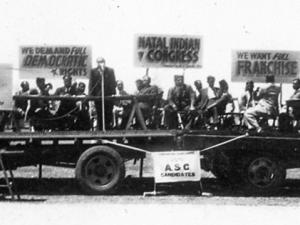This Day in History: March 15, 1946
Additional Date: March 15, 1946
As the so-called 'Pegging Act' was due to expire in March, 1946, Prime Minister J.C. Smuts realised that something would have to be done to replace it. The Asiatic Land Tenure and Indian Representation Act (Act 28 of 1946) was introduced on 15 March 1946 and passed in June 1946. This prevented Indians from occupying land outside certain exempted areas and was an attempt to marginalise Indians and force them to live in certain restricted areas. In return for the restrictions on land ownership, Indians were offered a limited form of parliamentary representation, mainly through White representatives.
This act, labelled the 'Ghetto Act' caused an outcry in the Indian community. Following it, Dr Yusuf Dadoo, with other younger leaders like G.M. Naiker, formed an anti-segregationist lobby, which soon ousted the older leadership. Naiker became the chairman of the Natal Indian Congress and Dadoo of the Transvaal Indian Congress. After the act was passed, a day of hartal (mourning) was called and soon afterwards a passive resistance campaign, lasting two years, was launched.
The Ghetto Act brought about a turning point in South Africa's international relations and standing in the world community. The position of Indians in South Africa was brought before the General Assembly of the United Nations, both by the Indian leadership in South Africa as well as by the government of India.
Click here for more on Anti-Indian legislation.
Read more about Indians in South Africa.
